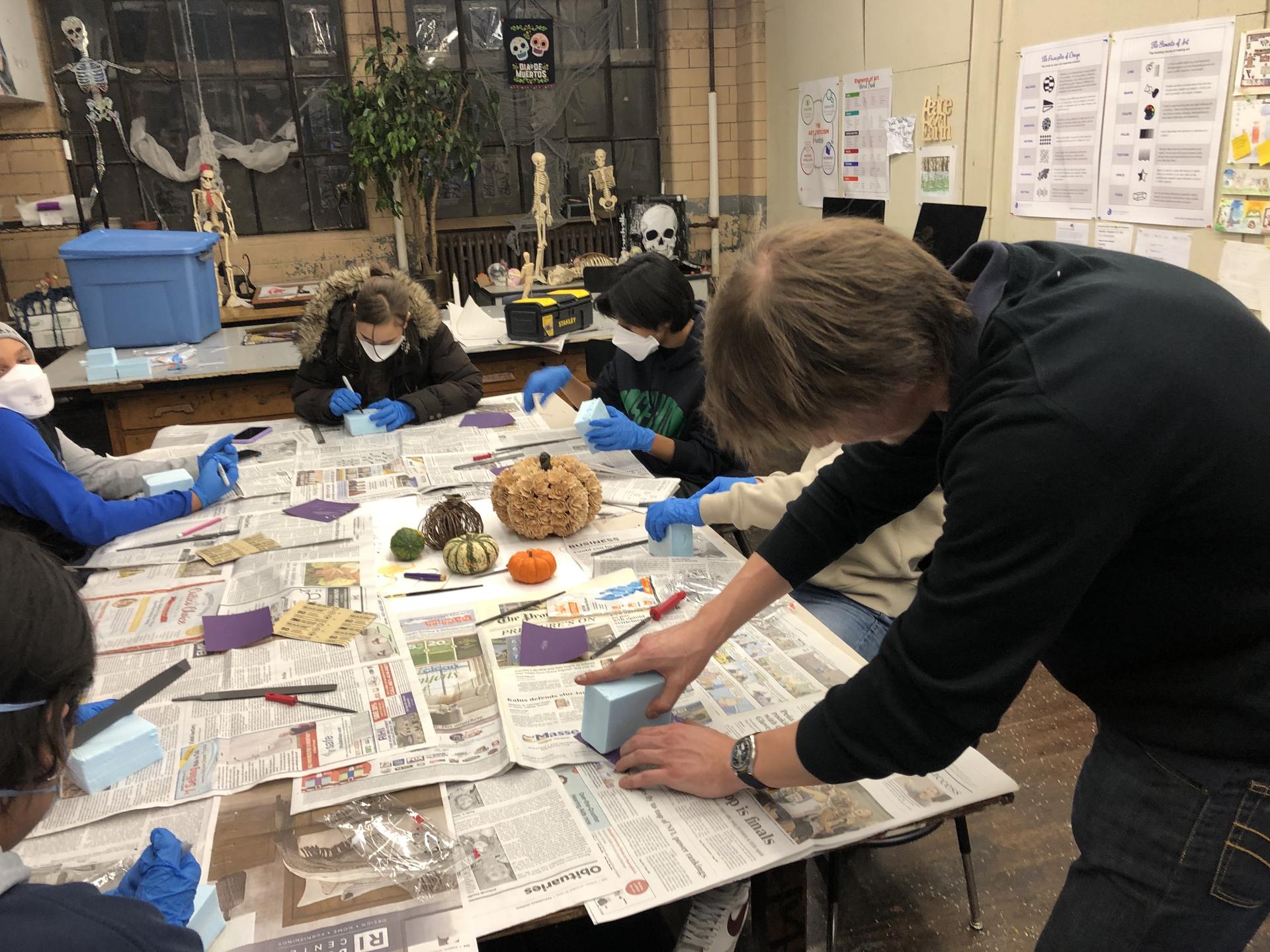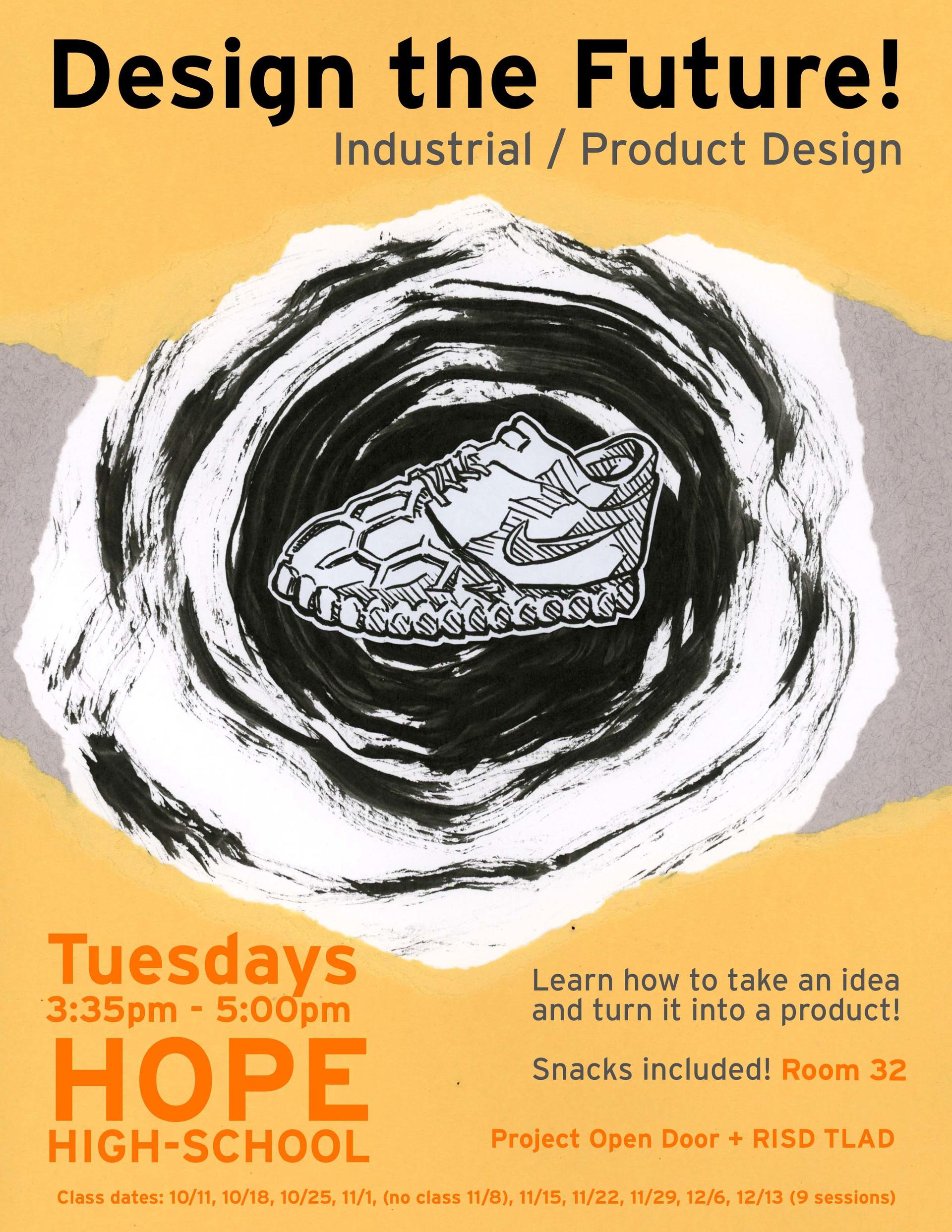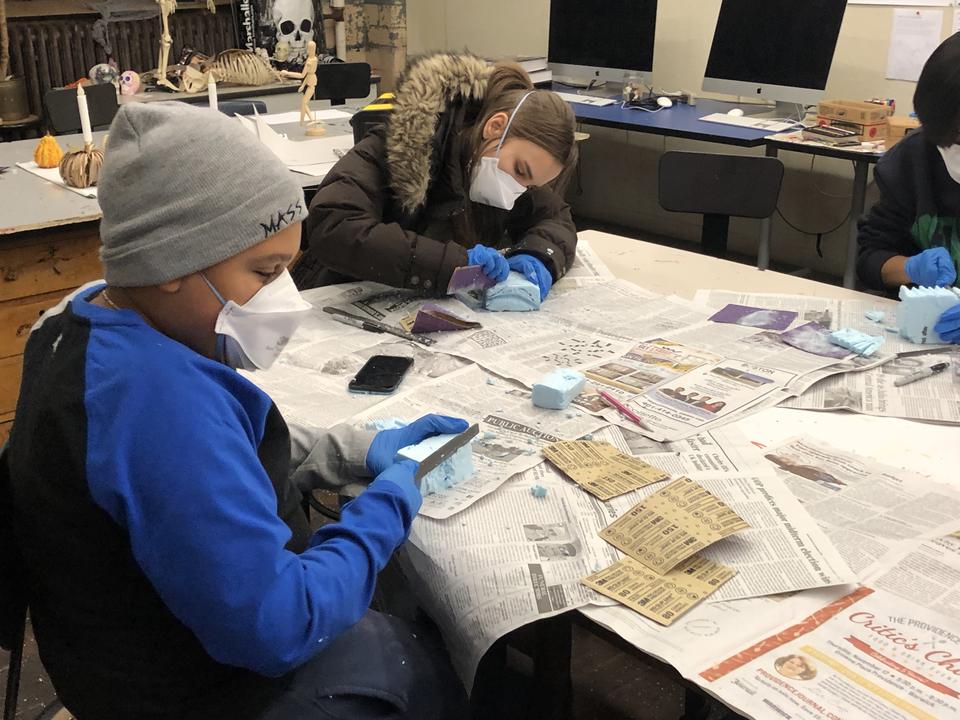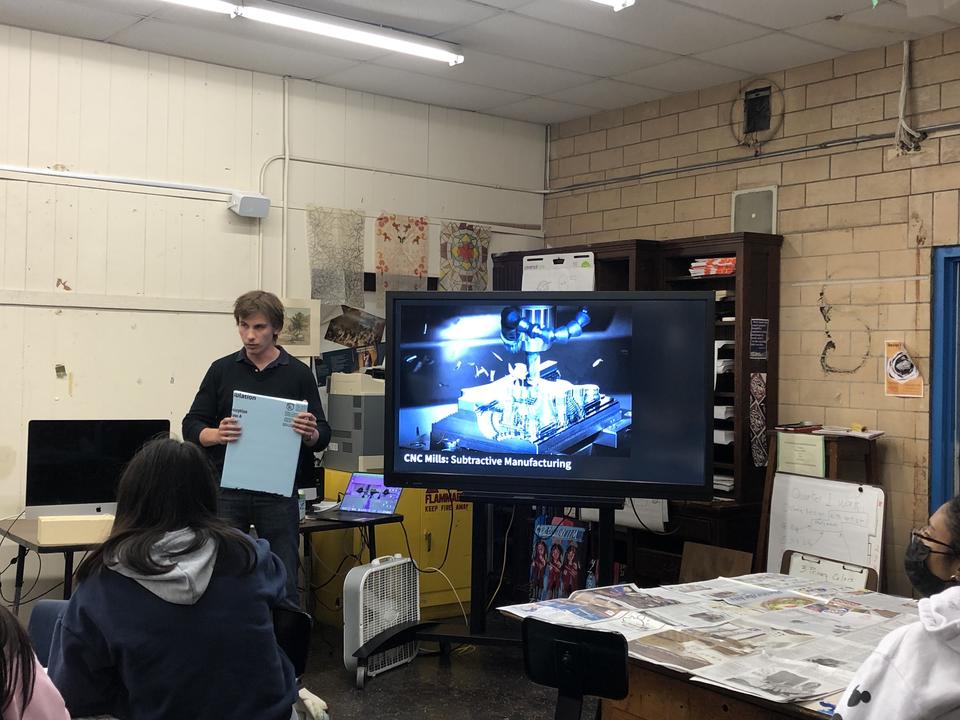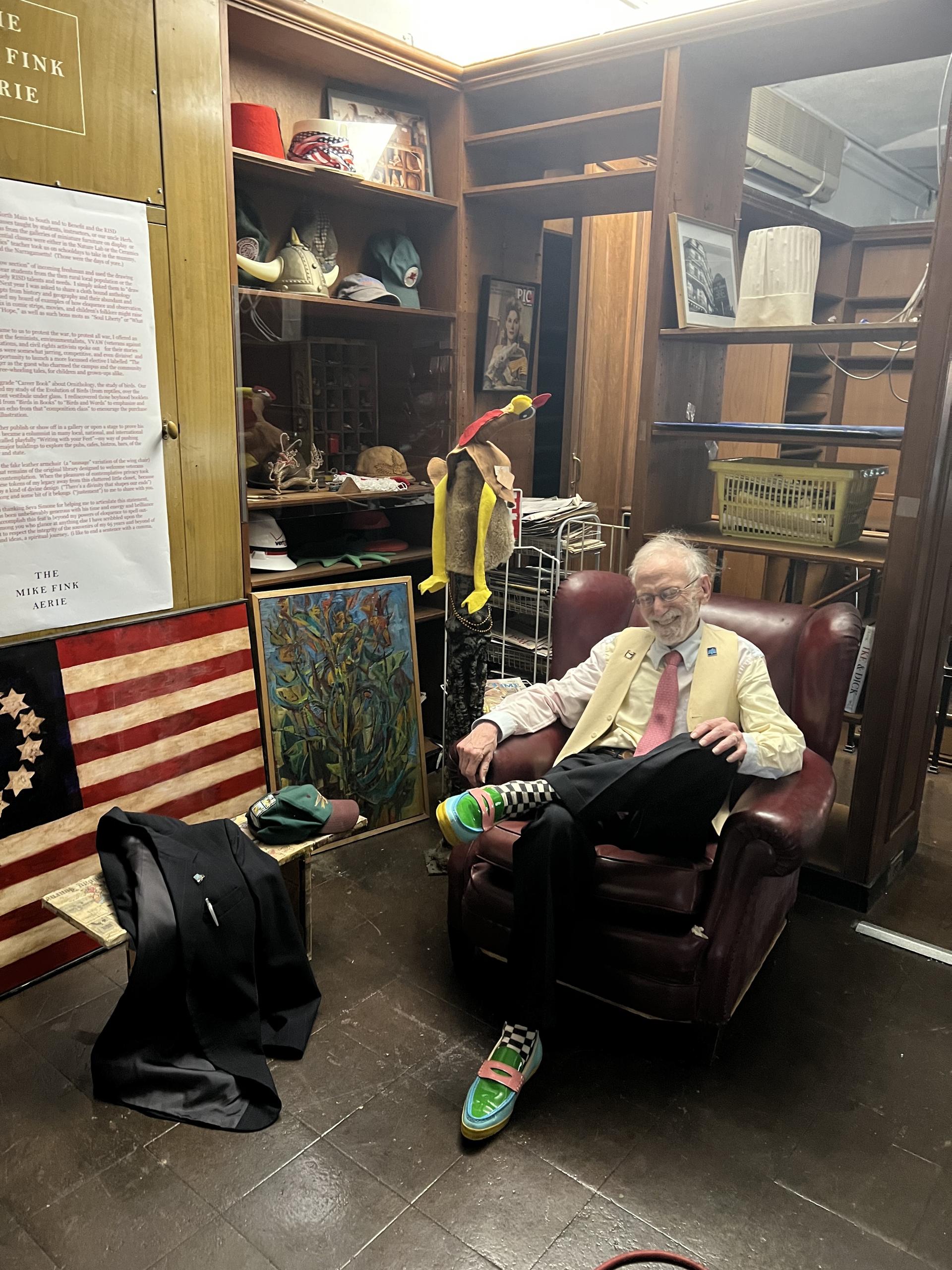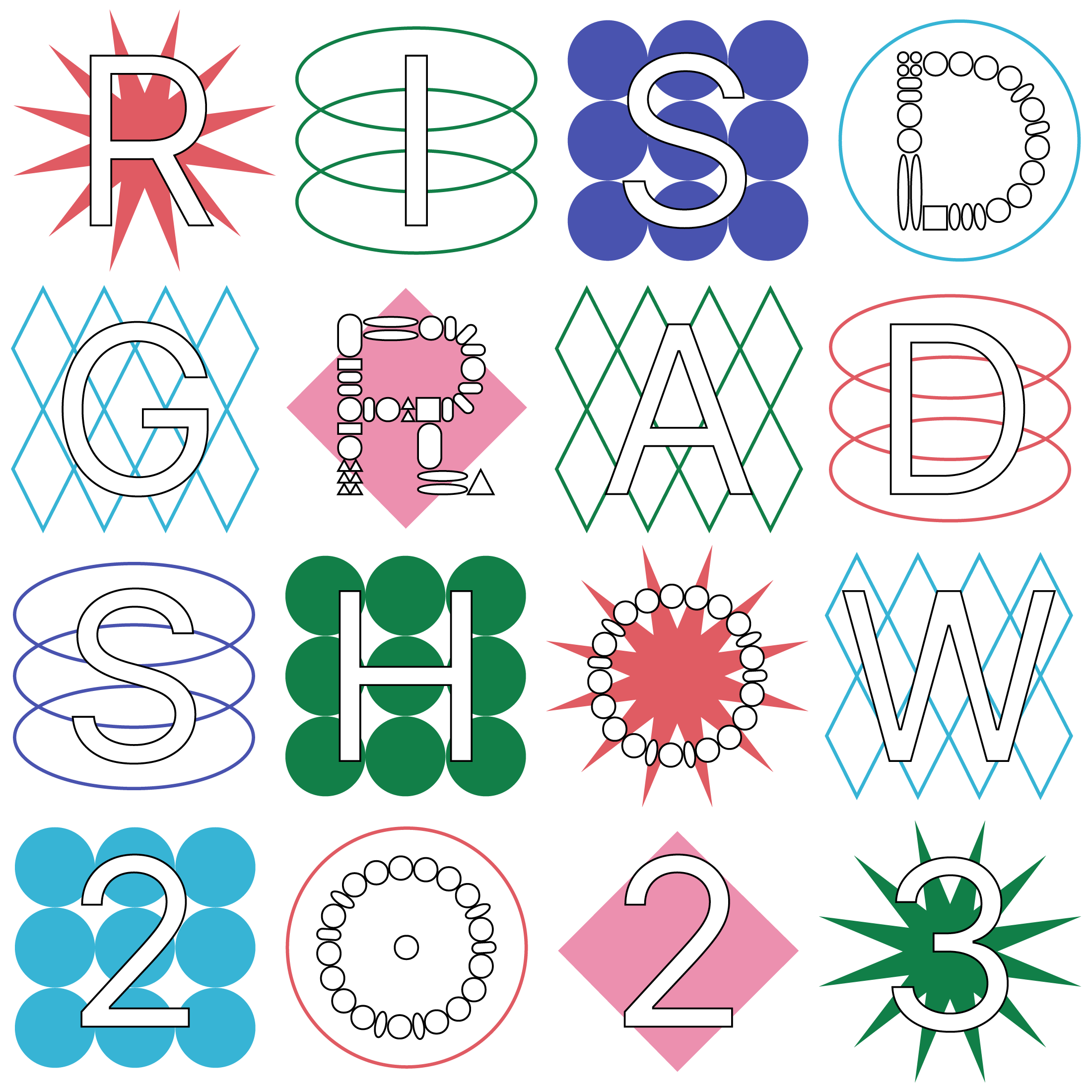Applying design thinking to art curricula
Art educators can apply design thinking to strengthen their curriculums in several ways:
Focus on problem-solving: Design thinking starts with identifying and understanding the problem before brainstorming and implementing solutions. Educators can apply this approach by encouraging students to identify problems they want to solve through art and design, and then guiding them through the process of finding creative solutions. This also translates into designing an art class. Educators can focus on solving what doesn’t work through design thinking, and simultaneously expanding on what works well.
Incorporate interdisciplinary collaboration: Design thinking often involves collaborating with people from different disciplines to come up with innovative solutions. Art educators can apply this by incorporating interdisciplinary projects into their curriculum that allow students to collaborate with others outside of their art class and collaborating with other teachers to teach content that transcends the boundaries of traditional art classrooms.
Encourage experimentation: Design thinking encourages experimentation and iteration. Art educators can apply this by encouraging students to explore different materials, techniques, and styles in their art making, and to revise and refine their work through a process of iteration. This helps students grow through play and encourages them to continue their studies outside of the classroom, drawing connections to the real world. Additionally, educators can use experimentation in their own classrooms, treating their space as a testing ground, to experiment with and evaluate new methods of teaching and subject matter.
Empathy and user-centered design: Design thinking emphasizes understanding the needs and experiences of the user. Art educators can apply this by encouraging students to consider the audience or user of their art and to design with their needs and experiences in mind. Oftentimes this manifests as designing for themselves, however it is important to understand how to design for others. Fundamentally, teachers must realize that they are teaching the students, thus what matters is what the students actually retain, not what is in the curriculum.
Foster a growth mindset: Design thinking encourages a growth mindset, where failure is seen as an opportunity to learn and improve. Art educators can apply this by creating a safe and supportive environment where students feel comfortable taking risks and learning from mistakes.
Applying design thinking to art education can help students by developing valuable skills in problem-solving, collaboration, experimentation, empathy, and growth mindsets. Teachers can promote this by providing students with a framework for creating innovative and impactful art and design projects. They can also strengthen their own art curriculums with design thinking, by using concrete methodologies to ideate, test, evaluate, and improve their methods.

